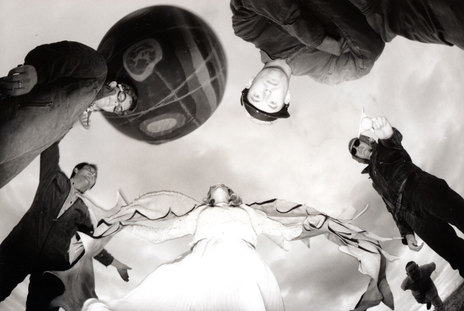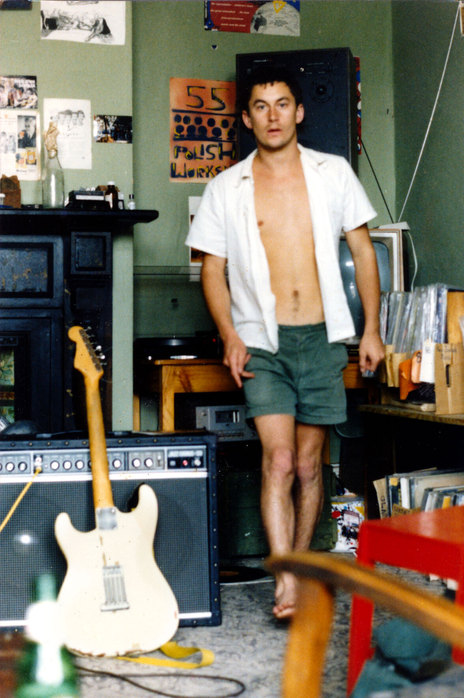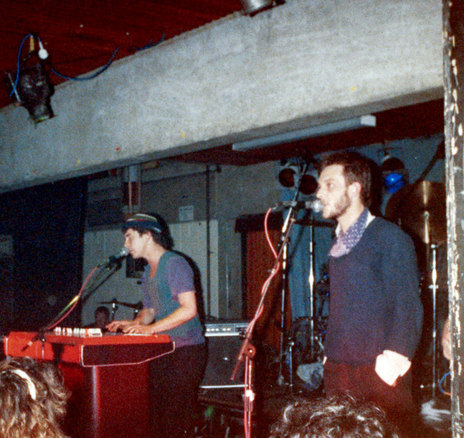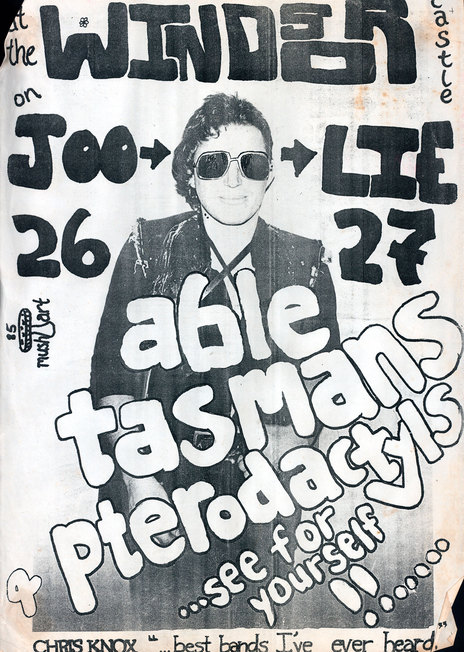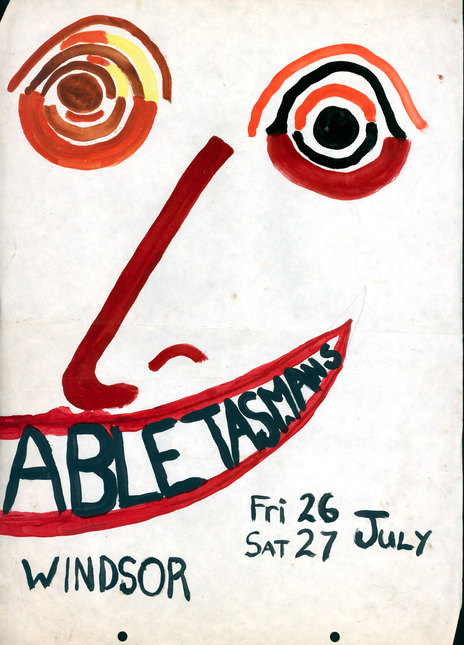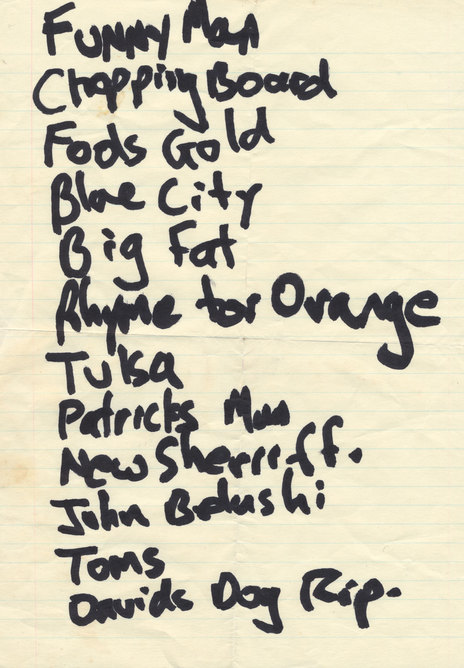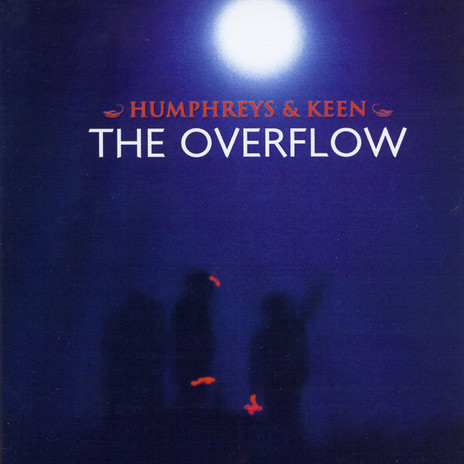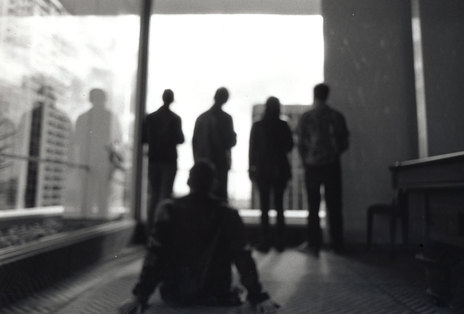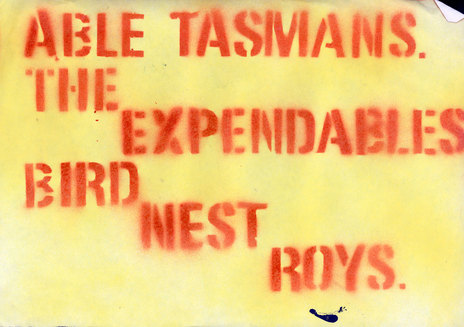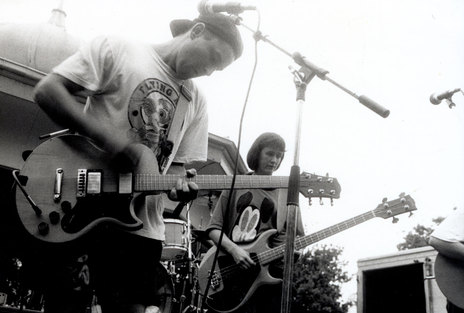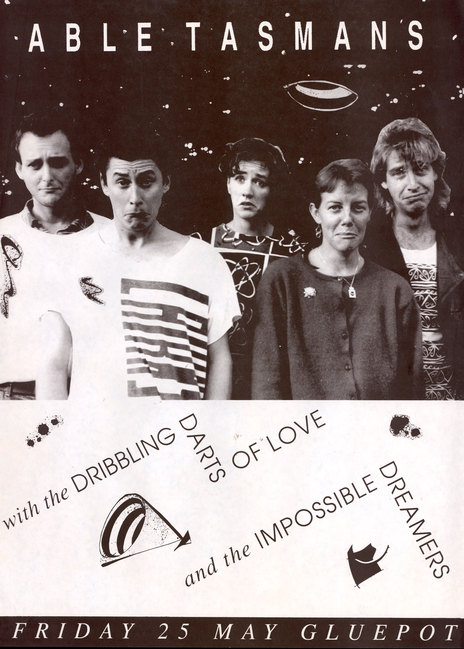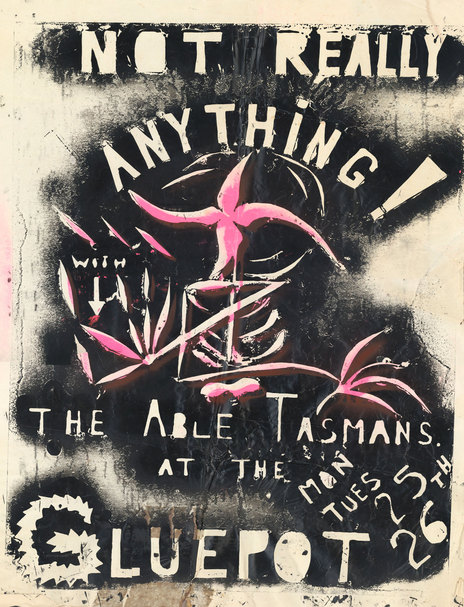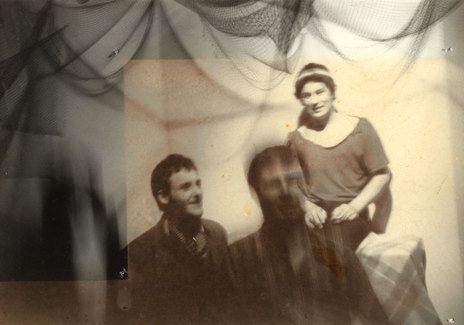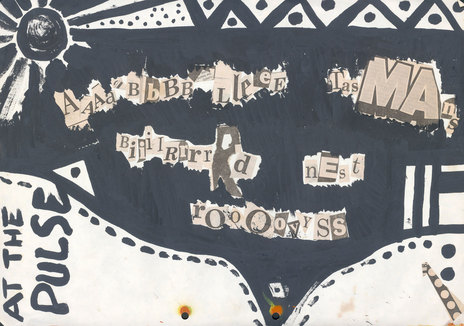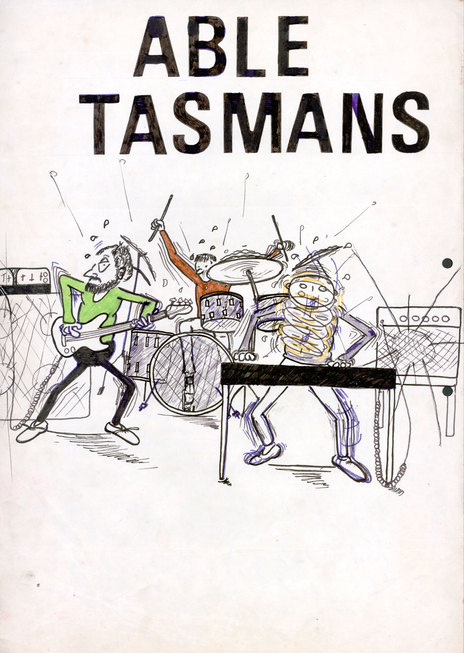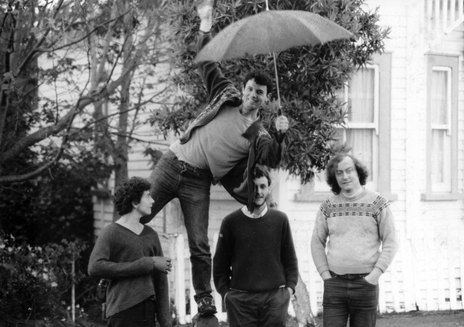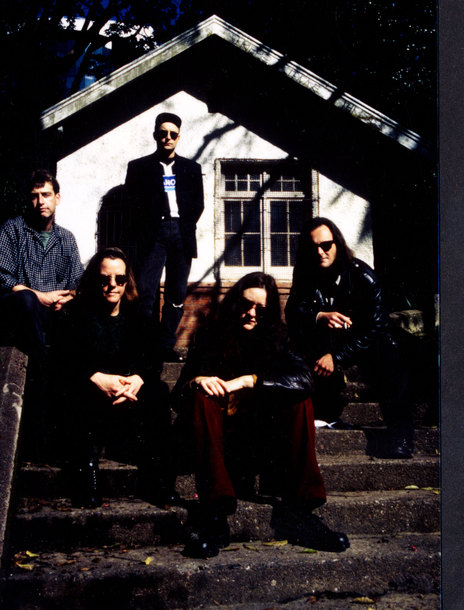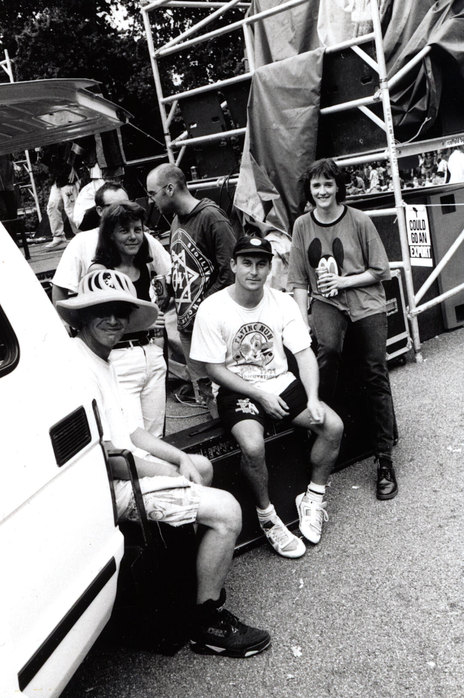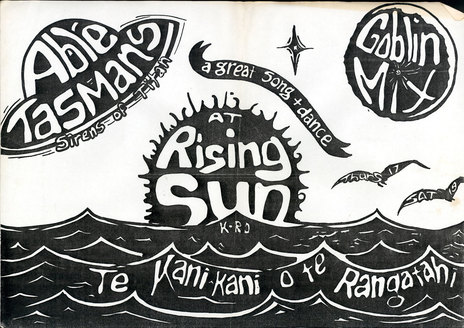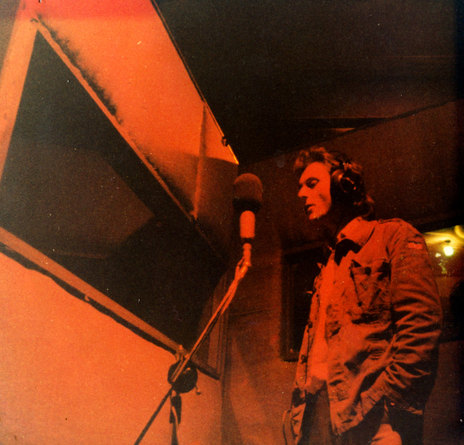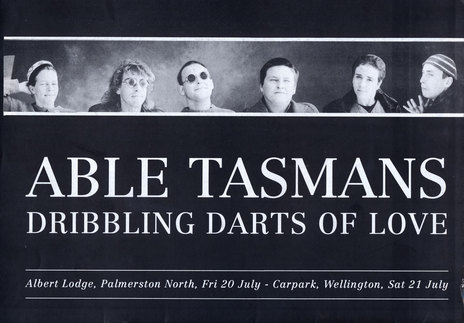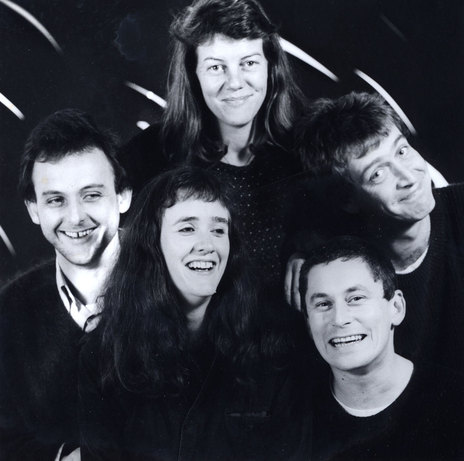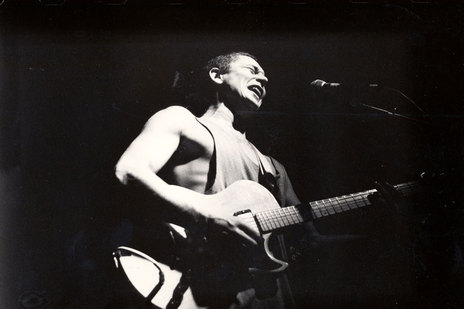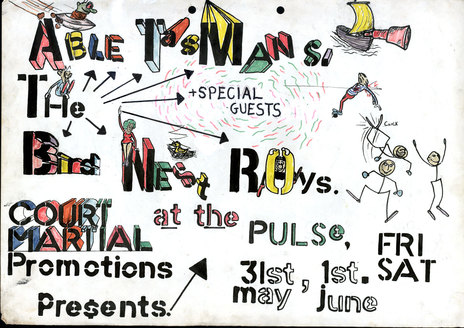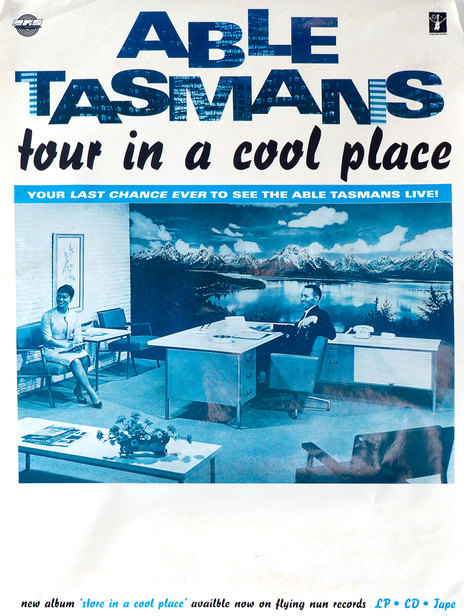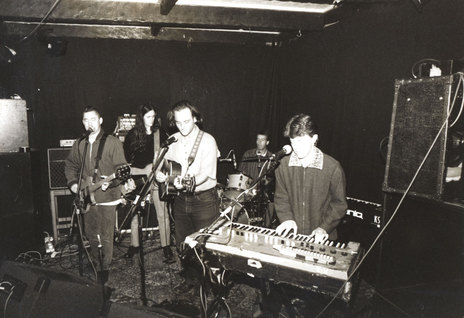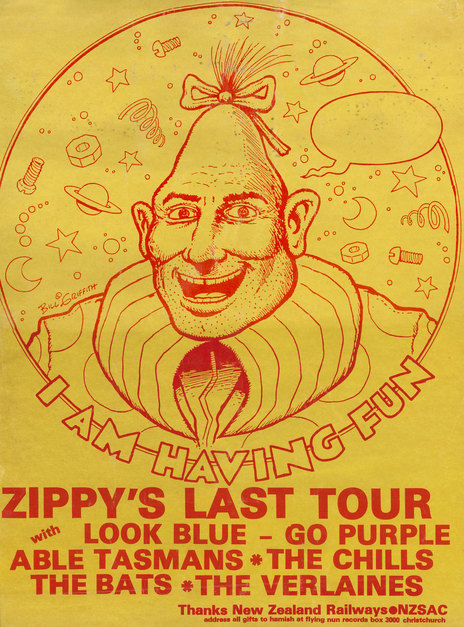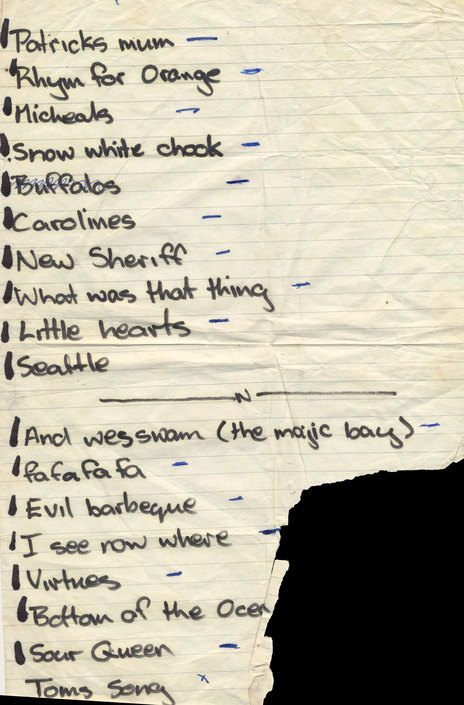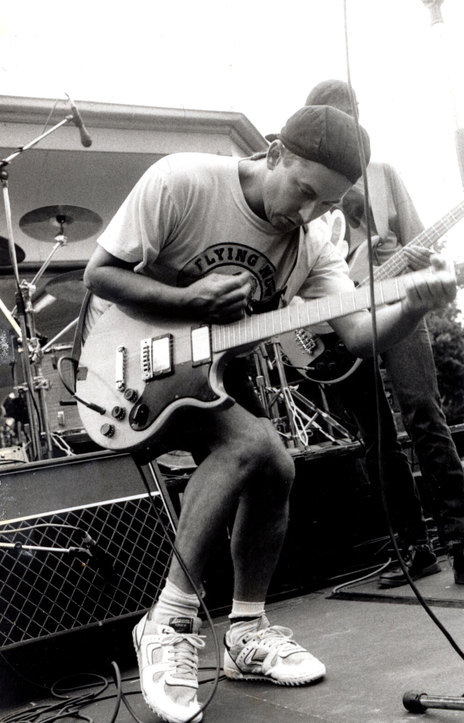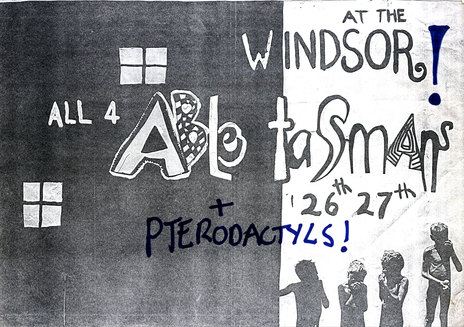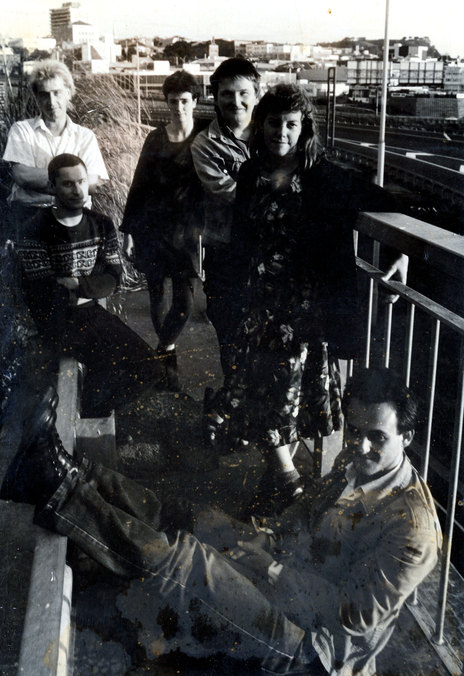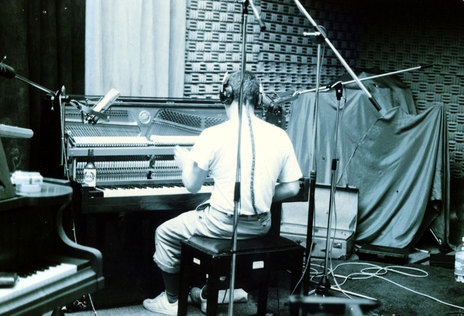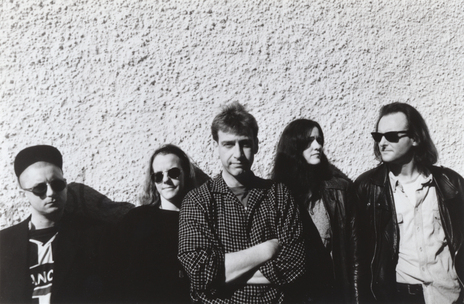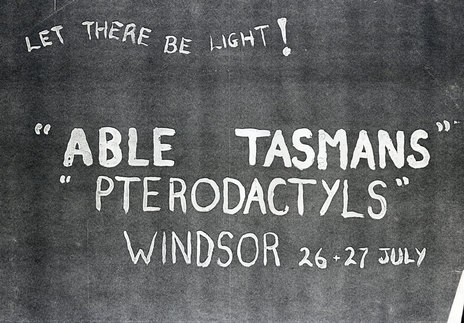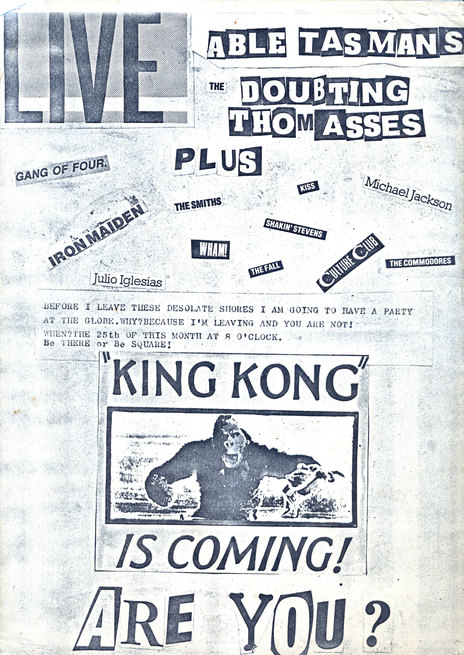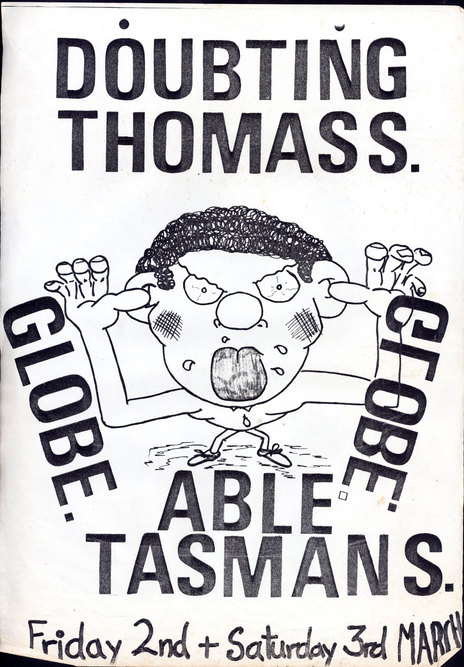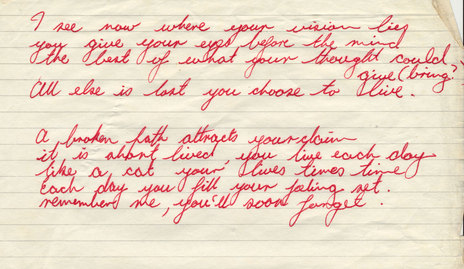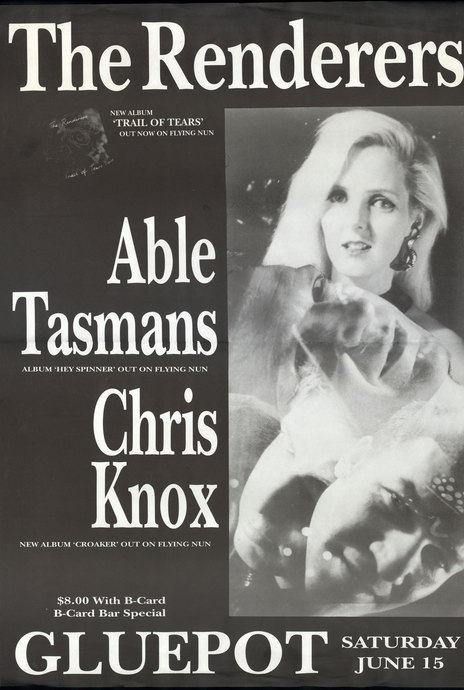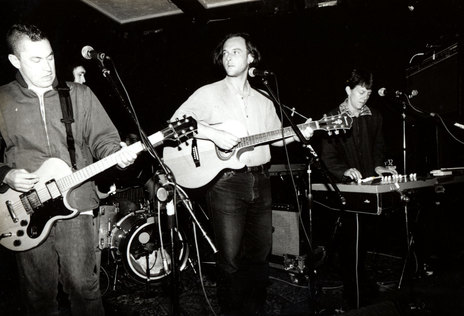But Humphreys persuaded Sister Ray’s drummer Craig Baxter to join him in the big city, and the pair made their first performances under the name Able Tasmans as a duo in 1983. The old band's bass player, Dave Beniston, was eventually lured south and his implacable stage presence provided an anchor for the manic figure of Humphreys on vocals and keyboards.
Humphreys' exuberance and the unusual format of the group helped make them both popular and memorable, and that early style was captured in the likes of the peppy, organ-led 'Rhyme for Orange' from their 1985 debut EP for Flying Nun, The Tired Sun. Peter Keen and Anthony Nevison provided vocals and guitar respectively on the recording, and although the latter would soon move on, Keen became a core member of the group.
Humphreys had always professed admiration for Keen's little-known previous band Raucous Laughter and one of that group's recordings, 'Relapse', was released as the B-side to the Tasmans' 1986 7-inch single 'Buffalos'. The pair had met studying zoology and the band's nerdiness and affection for science became a running joke.
Humphreys' student association-owned house in Marlborough Street, Mt Eden, became a hub for a lively community of Flying Nun artists and their friends, and was at various times home to Jeff Batts (The Stones), Matthew Bannister (Sneaky Feelings) and Nevison (who later joined the Headless Chickens).
The first album, 1987's A Cuppa Tea and A Lie Down, showed off a denser, more eclectic sound and more sophisticated songwriting, with Keen now very much the lead singer. The likes of 'Sour Queen', with Jane Leggott's dancing flute, still sound captivating. By this time, the Whangarei duo had swelled into a collective. A group photo on the back of the album sleeve included no fewer than 21 musicians and creative helpers. Foreign fans subsequently formed the mistaken impression that all 21 were in fact members of the band.
Hey Spinner! may well be the most-loved of the band's records. Delicate, nimble songs like 'Grey Lynn' and the gentle, pointed social commentary of 'Michael Fay' had something to say.
Music was never a career for the Able Tasmans and it would be three years (during which Keen worked as a marine biologist and Humphreys as breakfast host and programme director of 95bFM) before the next album, Hey Spinner! It turned out to have been worth the wait. Hey Spinner! may well be the most-loved of the band's records. Delicate, nimble songs like 'Grey Lynn' and the gentle, pointed social commentary of 'Michael Fay' had something to say, and with former Verlaines member Jane Dodd on bass and Ron Young on analog synth, the group found both fluidity and a broad sonic palette.
There followed 1992's Somebody Ate My Planet and 1993's The Shape of Dolls – the latter a return to the classic Flying Nun EP format that, in its lilting title track and the spiky 'Big Bang Theory', included two of the band's best tunes. The last original Able Tasmans record was 1995's album Store in a Cool Place, which was followed three years later by the compilation Songs from the Departure Lounge.
And yet, it wasn't quite over.
Humphreys and Keen pursued separate careers – as a broadcaster and a marine biologist respectively – but continued to write songs together. In 2003, with Keen about to depart on an oceanographic research vessel, they decided to record the songs they had written at Radio NZ's Helen Young Studio. The result was 2005's The Overflow, an album described by Bandcamp reviewer Andrew Dubber as "a stone cold masterpiece, a beautiful record – and an important piece of New Zealand art."
Although the album was released under the name Humphreys and Keen, former Able Tasmans Dodd, Young, Leslie Jonkers and Craig Mason were all involved in one way or another. It is not going to too far to say that The Overflow, with its lush string and brass arrangements and Andre Upston's engineering, is the most fully-realised album the Able Tasmans never made.
Original bassist David Beniston died suddenly in Melbourne on May 11 2011 of an aneurism. His ashes were spread in the forest hill of Parihaka that overlooks Whangarei.
